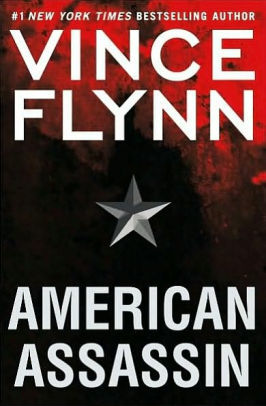
American Assassin
Chapter 14
by Flynn, VinceThe provided excerpt is not a complete book chapter but rather a collection of promotional material, copyright information, and acknowledgments from Vince Flynn’s *American Assassin*. The text highlights the novel’s critical acclaim, with reviewers praising Flynn’s gripping storytelling and the character of Mitch Rapp, a CIA operative likened to Jason Bourne. The book is described as a timely, high-stakes thriller that resonates with post‑9/11 anxieties, offering a blend of action, political intrigue, and realism.
The excerpt includes endorsements from notable figures like Glenn Beck, Rush Limbaugh, and Bill O’Reilly, emphasizing the novel’s appeal to readers interested in national security and counterterrorism. Flynn’s meticulous research and ability to craft complex, adrenaline-fueled plots are repeatedly commended, with reviewers calling the book “spectacular” and “unputdownable.” The acknowledgments section reveals Flynn’s gratitude to his wife, editors, and industry professionals who supported the book’s production.
Flynn dedicates the novel to the victims of the Pan Am Lockerbie terrorist attack, underscoring the story’s connection to real-world tragedies. The excerpt also lists Flynn’s other works, all centered on Mitch Rapp, and provides publishing details, including copyright and ISBN information. The prelude hints at the protagonist’s internal conflict, setting the stage for a high-tension narrative in Beirut.
Overall, the excerpt serves as a marketing tool, showcasing the novel’s commercial success and critical reception while offering a glimpse into Flynn’s creative process. The tone is celebratory yet professional, aligning with the thriller genre’s emphasis on suspense and action. The text effectively positions *American Assassin* as a must-read for fans of political and military thrillers.
FAQs
1. What is the significance of the dedication “To the victims of the Pan Am Lockerbie terrorist attack and their families” in the context of Vince Flynn’s American Assassin?
Answer:
The dedication highlights Flynn’s thematic focus on terrorism and its human cost, which is central to American Assassin. The 1988 Lockerbie bombing (a real-life terrorist attack) mirrors the novel’s exploration of vengeance, justice, and the psychological toll of counterterrorism. By honoring these victims, Flynn underscores the gravity of the threats his protagonist, Mitch Rapp, confronts. The dedication also aligns with Rapp’s backstory—his transformation into a lethal operative is driven by personal loss, echoing the real-world grief of terrorist attacks.
2. How does the marketing copy (e.g., “the voice of today’s postmodern thriller generation”) frame American Assassin’s appeal to readers?
Answer:
The promotional text positions the novel as a gritty, timely thriller that resonates with post-9⁄11 anxieties. Phrases like “ultimate hero” and “war on terror” emphasize Rapp’s role as a morally complex, hyper-competent operative who navigates geopolitical chaos. Comparisons to Jason Bourne and accolades from conservative commentators (e.g., Rush Limbaugh) signal its crossover appeal—combining action with political commentary. This framing targets readers seeking both escapism and a critique of modern security dilemmas.
3. Analyze how the chapter’s structure (prelude, Part I/II divisions) builds narrative tension.
Answer:
The prelude’s abrupt opening—Rapp questioning his sanity in a Beirut mirror—immediately establishes psychological stakes and intrigue. The bifurcated structure (Parts I and II) suggests a pivotal shift, likely between Rapp’s origin story and his operational missions. Short chapters (66 total) create a relentless pace, mirroring Rapp’s high-stakes world. This design hooks readers by alternating introspection (e.g., Rapp’s self-doubt) with action, a hallmark of Flynn’s “high-concept political intrigue.”
4. Why might Flynn’s acknowledgments emphasize collaboration (e.g., his wife, intelligence sources) for a work of fiction?
Answer:
Flynn’s gratitude to real-world experts (e.g., Rob Richer, a former CIA officer) lends authenticity to his portrayal of espionage tactics and Middle East geopolitics. His wife’s “stoic” support underscores the intensive research and isolation required to craft plausible thrillers. By crediting these contributors, Flynn signals that his fiction is grounded in real operational nuances, elevating its credibility for readers who value accuracy in the genre. This also reflects the genre’s expectation of insider knowledge.
5. How does the Beirut setting in the prelude foreshadow Rapp’s character arc?
Answer:
Beirut in the early 1990s was a hub of factional violence, mirroring Rapp’s internal conflict as he transitions from grief-stricken civilian to assassin. The “dusty, cracked mirror” symbolizes his fractured identity and the moral ambiguity of his mission. Historically, Beirut’s chaos parallels Rapp’s coming challenges—navigating betrayal, asymmetric warfare, and blurred lines between justice and revenge. This setting primes readers for a protagonist shaped by—and ultimately confronting—global instability.
Quotes
1. “Behind the steely gaze of the nation’s ultimate hero is a young man primed to become an AMERICAN ASSASSIN”
This quote captures the central premise of the chapter - introducing Mitch Rapp as a formidable protagonist being shaped into America’s deadliest weapon against terrorism. It sets the tone for his transformation.
2. “Rapp is still the best CIA-trained human weapon this side of Jason Bourne.”
This comparison highlights Rapp’s exceptional skills and establishes him as a peerless operative in the thriller genre, worthy of standing alongside other iconic action heroes.
3. “Simply stated, there’s nothing better than watching Mitch Rapp in fiction knock off the bad guys nobody seems able to get in fact.”
This quote speaks to the wish-fulfillment aspect of the story, where Rapp accomplishes what real-world counterterrorism efforts cannot, making the novel both timely and cathartic for readers.
4. “A Rambo perfectly suited for the war on terror.”
This succinctly positions Rapp as the post-9⁄11 generation’s action hero, updated for contemporary geopolitical conflicts and security concerns.
5. “Every American should read this book.”
Bill O’Reilly’s endorsement (quoted here) underscores how the novel transcends entertainment to address serious national security issues, giving it broader cultural relevance.
